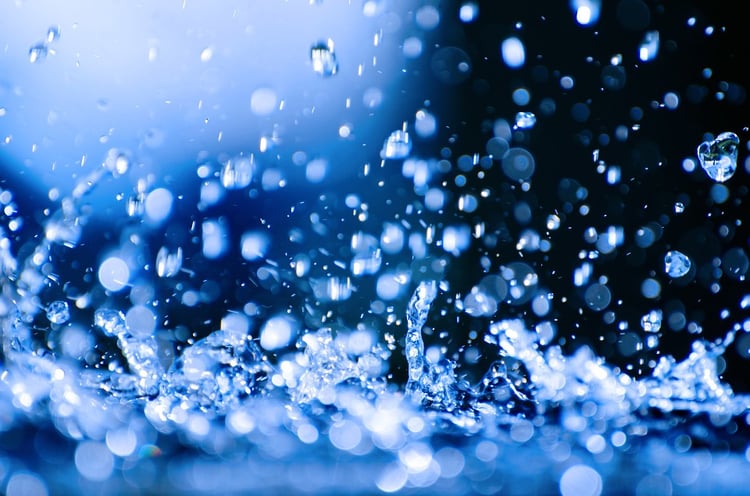
In order to ensure that your facility runs smoothly, you need to know that your water treatment system is running as efficiently as possible. If recent changes to policy are demanding a better water footprint, you may be wondering whether the reverse osmosis (RO) system you’re currently using is helping your facility meet these objectives. This article will look at water wastage with RO systems, as compared to alternative solutions.
Water Wastage With RO Systems
The membrane technology used by RO systems rids water of mineral impurities. However, they also periodically require filter cleaning through backwashing. Typically, for every litre of filtered water these systems produce, they will discharge anywhere from 15 to 76 litres in backwash water. This discharge water is only slightly less pure than the source water entering the system for treatment. Because of this, discharge water can be reused in several applications, thereby decreasing water wastage.
Calculating Wastage
Before you can calculate how much water your RO system is wasting, you need to assess the quality of the feed water that enters it. The waste water you generate will depend on the Sodium Chloride (NaCl) input load at optimum conditions of 250ppm, 70psi and 25°C. A system running below 40 psi will produce only wastewater. Along the same lines, water at colder temperatures will result in more waste water and less efficiency from the system. Over time, membranes will become clogged with contaminants, which will increase water wastage because of decreased pressure in the system.
Pre-treatment of feed water is another source of wastage with the reverse osmosis system. However, exact wastage will depend on the type of pre-treatment used. The reverse osmosis process does waste less water than distillation. However, RO is still near the top of the list for water wastage.
Deionisation
Modern deionisation systems use an electrical charge, both to remove impurities from water and clean the anion and cation resins. However, the generation of backwash will also occur with deionisation. The cation bed will need to be backwashed to remove debris and any broken resin beads. Generally speaking, between backwash, chemical draw, slow rinse and fast rinse, total cation backwash can reach over 3,800 litres, and anion backwash over 8,700 litres in a single cycle of treatment.
Where the reduction of water wastage is the goal, a deionisation system offers several options for reducing wastage. The need to backwash during each cycle can be greatly reduced by pre-filtering feed water through activated granular carbon. As much as 80% of cation backwash can be saved in this way.
Similarly, the anion resins can be regenerated not by backwashing, but with the unrinsed cation bed. Regenerating in this way will neutralise the rinse using the anion bed’s remaining capacity.
Another solution is to re-circulate water that would be used for rinsing back into the system. This water can be used time and again to ensure a quality rinse. Finally, recycling the backwash water is another way to tighten the system and reduce waste. Backwash water can be stored, pumped, filtered and used many times over to save thousands of gallons of water.
General Filtration
The filtration process, in which water flows over some manner of filtration media, uses chemical adsorption or physical obstruction – or a combination of the two – to prevent contaminants from passing through. Filtration involves the passage of water through several stages at low speed to produce clean water at the end of the process.
Physical Filtration sees water being strained through a series of filters to remove large particle impurities, while Chemical Filtration sees water passing through some kind of active material that’s been charged with a chemical to remove impurities.
Filters can be arranged vertically to allow water to pass with the action of gravity through several filters. Depending on the nature of each filter, some water may be absorbed, leading to far less clean water being produced than originally entered the system. This may or may not be considered to be wastewater, although it is water that’s unavailable for further treatment or re-use.
Activated carbon is a type of filter which works by trapping impurities via absorption. This process generates very little wastewater. However, the cost of replacing the activated carbon filters will be an ongoing requirement.
There are many types of industrial water treatment that can generate low volumes of wastewater. This makes choosing the best RO alternative a challenge.
Get Free Help For Water Wastage With Our Guide
If you need to reduce water wastage in your facility, but find the options overwhelming, our free “Guide To Industrial Water Purification Systems” has been written to help you. Our eBook contains information about several industrial water purification systems, and helps you make an informed decision. Please claim your copy by clicking here. We’re also available to answer your questions by email on sales@wychwood-water.com.










 We are a specialist independent company involved in water purification and water treatment technologies
We are a specialist independent company involved in water purification and water treatment technologies


